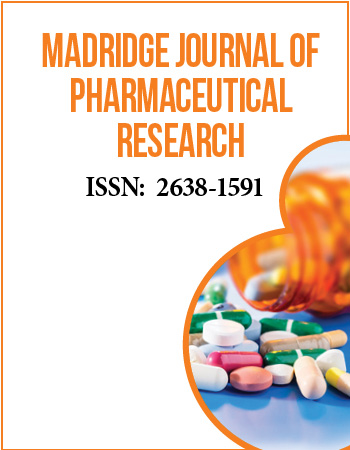International Conference on Medicinal and Pharmaceutical Chemistry
December 5-7, 2016 | Dubai, UAE
Design, synthesis and biological characterization of chalcones and propanediones as inhibitors of histone methyl transferase against leukemia cell lines
Bharati Vidyapeethʼs College of Pharmacy, India
Cancer deaths rule the charts for over a decade with no persistent solution. Novel target specific therapy is an absolute need of the hour. Abundant work has been done and reported concerning the close liaison between inflammation and cancer. Curcumin is one such molecule that has been extensively explored against inflammation and is being recurrently studied against various types of cancer including leukemia with multiple mode of action, one amongst them being via histone methylation. However, the drawback of poor bioavailability profile restricts its drug status. Difluorinated chalcones and propanediones, owing to their structural similarity to the enol-keto form of curcumin, as well as to the plausibility of improved bioavailability due to fluorine atoms, seemed to bear appropriate candidature to be explored against histone methyltransferase in leukemia. These molecules were docked with 3K5K, G9a -UNC0224 crystal complex along with curcumin. Only after visible desired interactions, these molecules were subjected to enzyme inhibitory studies, considering BIX-01294 and curcumin positive control. 4-fluorine substituted di-fluorinated propanedione emerged as a potential inhibitor of histone methyltransferase highlighting 8-9% levels of methylation at 1 and 10 µM concentration. It showed significant apoptotic activity leading to G2/m arrest. In this study, we provide the first evidence that difluorinatedpropanedione is an inhibitor of histone methyltransferase and functionally involved in influencing cell proliferation and apoptosis in leukemic cell lines. The present studies on chalcones and propanediones herewith, showed that the di-fluorinated propanediones were more potent as compared to their chalcone counterpart. As also, the halogen substituted molecules proved to be more potential.
Biography:
Dr. Ramaa is professor, head of department of pharmaceutical chemistry at Bharati Vidyapeethʼs College of Pharmacy, Navi Mumbai. She received herPh. D in pharmaceutical chemistry from Institute of chemical technology in 1997 and since then she has been associated with theBharatiVidyapeethʼs college. She has received several grants from renowned funding agencies like Lady Tata Memorial trust, Basic Research in Nuclear sciences. She has published more than twenty five research and review articles in international and national esteemed journals. She has also presented more than thirty presentations at national and international conferences. She has recently edited a special issue on drug reprofiling in Current topics in medicinal chemistry, Bentham sciences.


